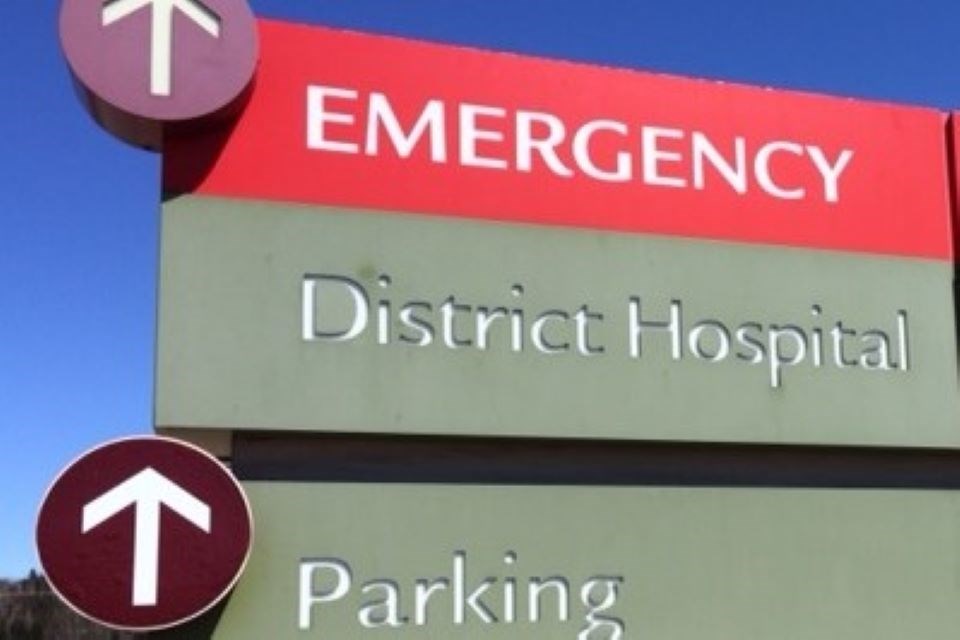EDITOR’S NOTE: This article originally appeared on The Trillium, a Village Media website devoted exclusively to covering provincial politics at Queen’s Park
Long wait lists for care, a family doctor shortage, and emergency department closures have pushed the province's health system to the point of "catastrophe," Ontario doctors are warning.
The Ontario Medical Association said on Wednesday that the provincial government needs to do more to "stop the crisis," which is also the focus of an advocacy campaign the organization has launched.
"More than 2.5 million people in Ontario are without a family doctor, and in less than two years, that number is going to almost double to 4.4 million. Emergency departments are crowded, and in many communities they're struggling just to stay open. Patients still have to wait too long for appointments, tests and care, up to the point it's become dangerous for many folks as they wait and linger, languishing on waitlists," said Dr. Dominik Nowak, president of the group representing doctors across the province.
"Individually, any of these issues would be considered a crisis, and together, we know they represent a catastrophe facing Ontario in our health-care system," Nowak said at a media briefing the OMA held on Wednesday.
The association is calling for the government to do more in family medicine, northern and rural health care, emergency department closures, surgical, specialist and diagnostic wait times, health workforce shortages and digital innovation.
Dr. Andrew Park, former OMA president and an emergency physician, said he's seen some of the "failures" of the health system in the emergency department.
Patients' cases are more complex now, requiring more resources, but our resources haven't changed, Park said.
He also called it "highly concerning and unprecedented" that between July 2022 and June 2023, there were more than 200 closures of emergency departments across the province.
The association wants to see the province create a way of "rostering and dispatching doctors" to cover areas at risk of closing their emergency departments due to staff shortages. The group also said the province needs a way of moving patients out of hospitals to "more appropriate care" and called for a system that involves co-ordinating and planning "out-of-hospital resources from the time of a patient admission to ensure discharge happens safely and effectively, with access to the community resources the patient needs."
The OMA also called for improved access to surgeries and diagnostics, saying access is "hampered due to staff shortages and the lack of a co-ordinated pathway to get to these vital services."
Part of the solution, according to the OMA, is for the province to have a centralized referral system that would include wait times, specialty area and location, which would allow better co-ordination of care among family doctors, specialists, hospitals and other care providers.
Another step is to provide funding for "specialized care training and hiring of teams, such as anesthesia care teams" to reduce waits for diagnostic tests, surgeries and specialty care.
The Trillium recently reported that for the last four years in Ontario, 10 per cent of children needing non-emergency surgery waited more than 230 days for their procedure, according to Ontario Health data. During the same period, around 30 per cent of non-emergency pediatric surgeries were not completed within the recommended time frame.
Park said while the government's promise last year to add $330 million each year for children's health services is welcome, it comes down to patients being able to access the care they need, when and where they need it.
He gave the example of children who get multiple inner ear infections and have to wait to have a tube inserted to drain their ears.
"This is a big wait because a lot of language development is occurring in these kindergarten children, they can't hear what their teachers are saying, so they're going to become delayed in their learning," he said.
Ultimately, the Ford government has two choices, according to Nowak.
"Health care can be a legacy-defining moment for this government," he said, adding that he'd like to see some "ambition" from the province.
"On one hand, this can be the government that let health care, that watched health care become a catastrophe," he said, acknowledging that it's due to "chronic underfunding" from various governments.
"On the other hand, this can be the government that finds everyone a family doctor, that deals with our emergency department closures, that deals with wait times and gets people the care that they need," he said.
Hannah Jensen, a spokesperson for Health Minister Sylvia Jones, said the government has added 12,500 new doctors to the workforce since 2018, including a 10 per cent increase in family physicians.
"While Ontario is leading the country with nearly 90 per cent of Ontarians having a primary care provider, we continue to build on our progress to ensure everyone who wants a family doctor has access to one," Jensen said.
"We have launched the largest medical school education system expansion in 15 years while breaking barriers for internationally educated physicians through programs like Practice Ready Ontario, making historic investments to expand interprofessional primary care teams, connecting 330,000 more people to primary care, and taking action to tackle administrative burnout, freeing up 95,000 hours that family doctors can spend with their patients. Through our government’s 2024 budget, we are doing even more, investing half a billion dollars to connect 600,000 more people to primary care," she added.
